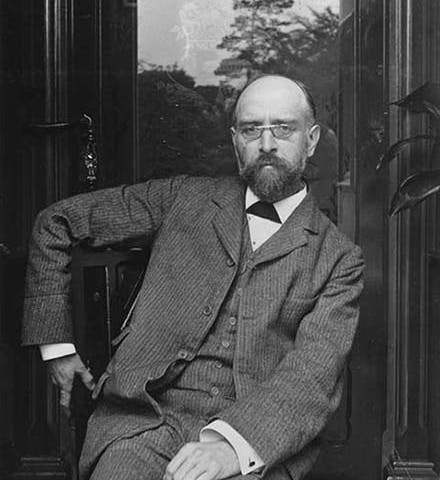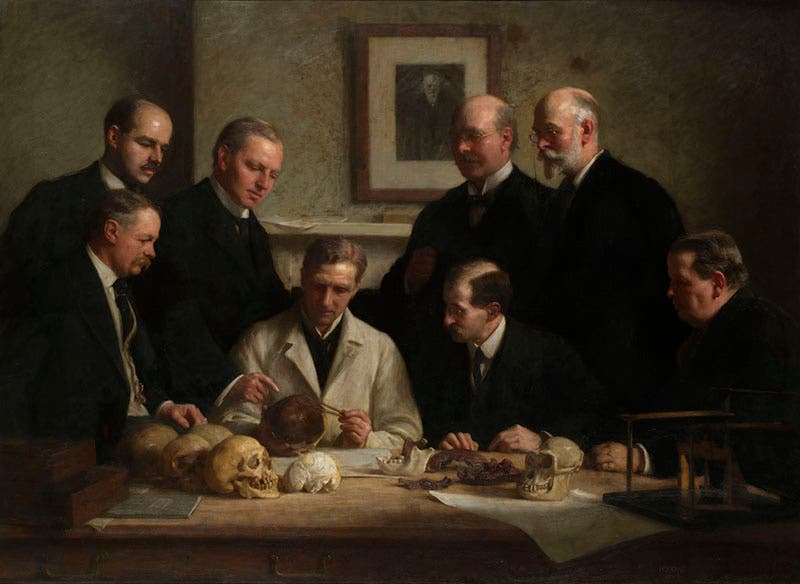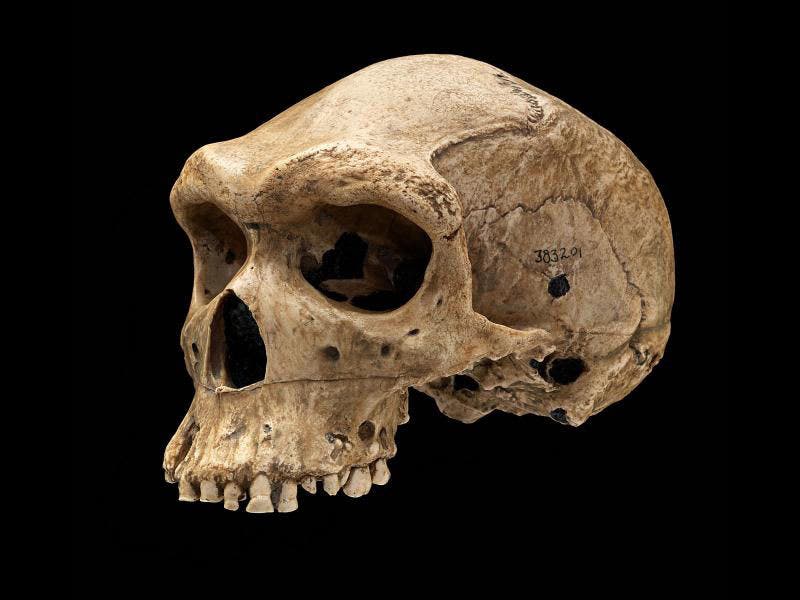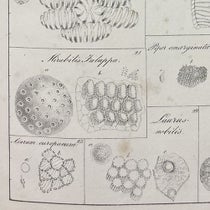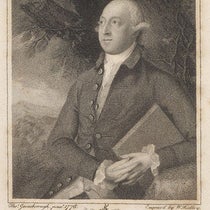Scientist of the Day - Arthur Smith Woodward
Arthur Smith Woodward, a British anthropologist, died Sep. 2, 1944, at the age of 80. At the time of his death, Woodward still believed that he had described the anthropological find of the century, Piltdown man. The Piltdown skull and jaw fragments, along with a canine tooth, had been found by an amateur, Charles Dawson, and Woodward had announced the find in 1912, naming it Eoanthropus dawsoni (Dawson’s Dawn Man), and proclaiming it a probable human ancestor. We displayed the published paper of 1913, showing the collected Piltdown fragments, in our 2012 exhibition, Blade and Bone: The Discovery of Human Antiquity. Although Piltdown man was quite different from the Java man specimen of 1891 (Piltdown had a large brain and an ape-like jaw, while Java man (now Homo erectus) had a small brain and a human-like jaw), the authenticity of Piltdown was accepted by nearly everyone British, probably because they were quite happy to have the human race originate in Merry Olde (Really Olde) England. Another English anthropologist, Arthur Keith, was so pleased by the Piltdown specimen that he had an image of the fragments embossed in gold on the blue cover of his new book, The Antiquity of Man (1915), which we displayed in our exhibition. That same year, portrait artist John Cooke painted a large oil painting that included the entire British anthropological community gathered around a table where the Piltdown skull was the featured attraction (second image). That is Woodward at the right in the back row, standing next to Dawson; Arthur Keith is the gentleman in the white coat, doing the honors. This painting still hangs in a room in the Geological Society of London, where they call it “The Piltdown Gang.”
It wasn't until 9 years after Woodward's death that Kenneth Oakley proved that Piltdown was a fraud – that the fragments were a combination of a recent human skull and an orangutan jaw and tooth, doctored and stained to look old, a hoax perpetrated by persons then unknown. Many people have been accused of doing the dirty deed in the past 60 years – including Arthur Conan Doyle and Teilhard du Chardin – but most of the suspicion now falls on Dawson. He used to be dismissed as a possible culprit because he was an amateur and supposedly didn’t know where to find skull fragments and the appropriate dyes and such, but it turns out that Dawson had created quite a number of fraudulent antiquities before his involvement with Piltdown and was cleverer (and shiftier) than we used to give him credit for. One man who has never been accused of wrongdoing in the matter is Woodward. Most students of the affair are glad that Woodward passed away before the shenanigans of his amateur colleague came to light. It would have been a crushing revelation.
The shadow of Piltdown tends to make us forget that Woodward was otherwise a most distinguished paleontologist. He was the recognized expert on fossil fishes in England. He was Keeper of the Geology Department at the British Museum (Natural History) for 23 years before he retired in 1924. And he was a key figure in the discovery of another human ancestor, this one untarnished by scandal. In 1921, a laborer working in a mine shaft in Broken Hill, Rhodesia, found a robust human skull. The find was turned over to the mine manager, who sent it to Woodward, who described the skull in the journal Nature in 1921. We included Woodward’s paper on the discovery in our Blade and Bone exhibition, with a vintage photo of the skull. A modern photo is just below.
The skull was soon known as "Rhodesian man," in parallel with earlier discoveries such as Neanderthal man, Cro-Magnon man, Java man (and Piltdown man). At the time, Rhodesian man was thought to be a fairly recent human or human ancestor. We now know that Rhodesian man was much older than Neanderthal, and probably ancestral to Neanderthal. It is currently considered to be a late specimen of Homo heidelbergensis. Broken Hill, Rhodesia, is now Kabwe, Zambia, so the term Rhodesian man is losing currency, and these days the specimen is more frequently referred to as the Kabwe 1 skull or the Broken Hill skull. The skull is presently in the Natural History Museum in London; because it was the first early human specimen ever found in Africa, there has long been a movement in Zambia to have it returned, and one day, it probably will be.
In 1894, Woodward married Maude Seeley, the daughter of the noted dinosaur expert, Harry Govier Seeley; the Woodwards sat for a lovely photograph in an unknown year, perhaps around 1900 (fifth image). I have been unable to discover the location of Woodward’s grave; if anyone knows, please let me know.
Dr. William B. Ashworth, Jr., Consultant for the History of Science, Linda Hall Library and Associate Professor emeritus, Department of History, University of Missouri-Kansas City. Comments or corrections are welcome; please direct to ashworthw@umkc.edu.

